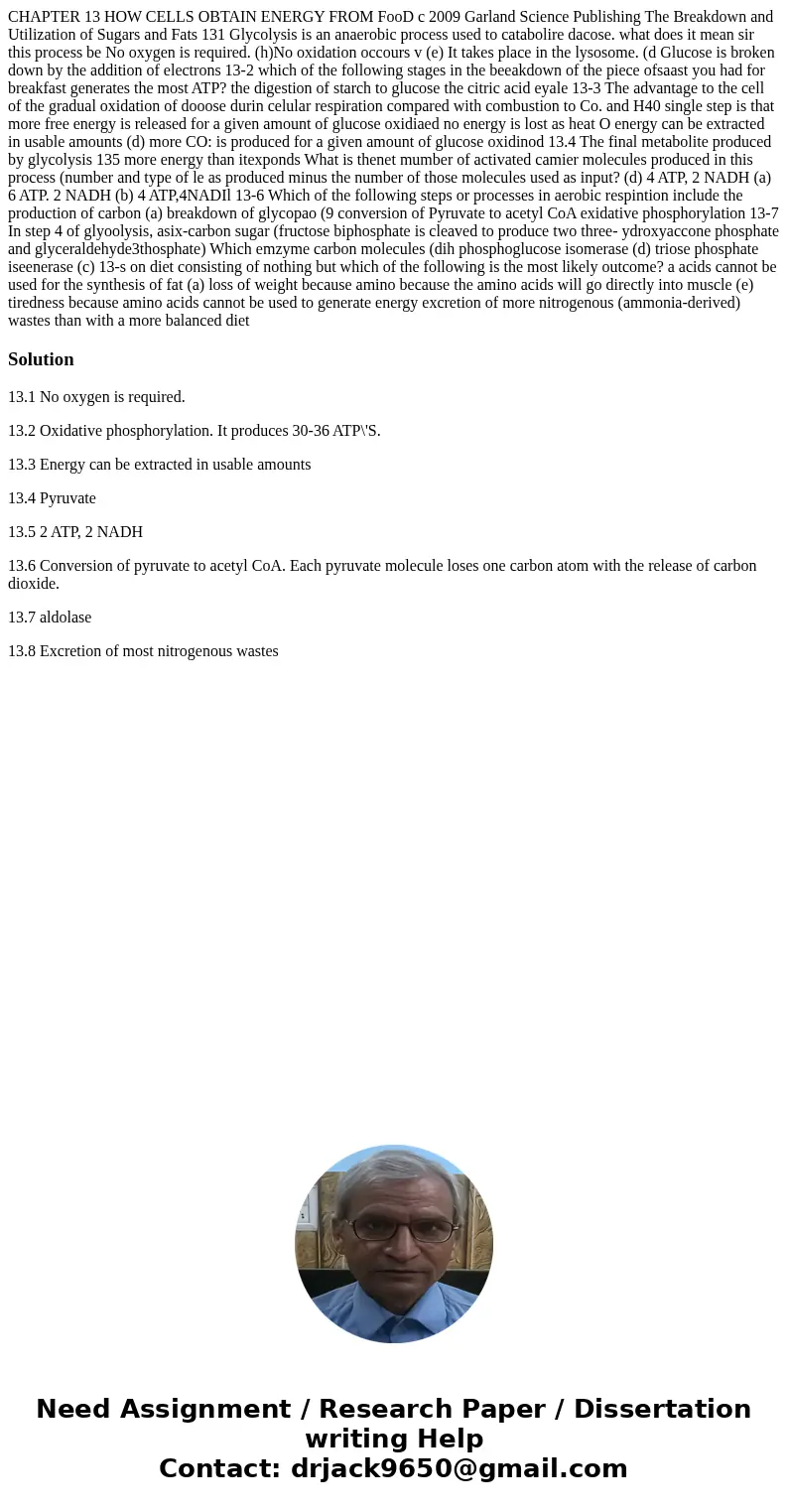CHAPTER 13 HOW CELLS OBTAIN ENERGY FROM FooD c 2009 Garland
CHAPTER 13 HOW CELLS OBTAIN ENERGY FROM FooD c 2009 Garland Science Publishing The Breakdown and Utilization of Sugars and Fats 131 Glycolysis is an anaerobic process used to catabolire dacose. what does it mean sir this process be No oxygen is required. (h)No oxidation occours v (e) It takes place in the lysosome. (d Glucose is broken down by the addition of electrons 13-2 which of the following stages in the beeakdown of the piece ofsaast you had for breakfast generates the most ATP? the digestion of starch to glucose the citric acid eyale 13-3 The advantage to the cell of the gradual oxidation of dooose durin celular respiration compared with combustion to Co. and H40 single step is that more free energy is released for a given amount of glucose oxidiaed no energy is lost as heat O energy can be extracted in usable amounts (d) more CO: is produced for a given amount of glucose oxidinod 13.4 The final metabolite produced by glycolysis 135 more energy than itexponds What is thenet mumber of activated camier molecules produced in this process (number and type of le as produced minus the number of those molecules used as input? (d) 4 ATP, 2 NADH (a) 6 ATP. 2 NADH (b) 4 ATP,4NADIl 13-6 Which of the following steps or processes in aerobic respintion include the production of carbon (a) breakdown of glycopao (9 conversion of Pyruvate to acetyl CoA exidative phosphorylation 13-7 In step 4 of glyoolysis, asix-carbon sugar (fructose biphosphate is cleaved to produce two three- ydroxyaccone phosphate and glyceraldehyde3thosphate) Which emzyme carbon molecules (dih phosphoglucose isomerase (d) triose phosphate iseenerase (c) 13-s on diet consisting of nothing but which of the following is the most likely outcome? a acids cannot be used for the synthesis of fat (a) loss of weight because amino because the amino acids will go directly into muscle (e) tiredness because amino acids cannot be used to generate energy excretion of more nitrogenous (ammonia-derived) wastes than with a more balanced diet 
Solution
13.1 No oxygen is required.
13.2 Oxidative phosphorylation. It produces 30-36 ATP\'S.
13.3 Energy can be extracted in usable amounts
13.4 Pyruvate
13.5 2 ATP, 2 NADH
13.6 Conversion of pyruvate to acetyl CoA. Each pyruvate molecule loses one carbon atom with the release of carbon dioxide.
13.7 aldolase
13.8 Excretion of most nitrogenous wastes

 Homework Sourse
Homework Sourse